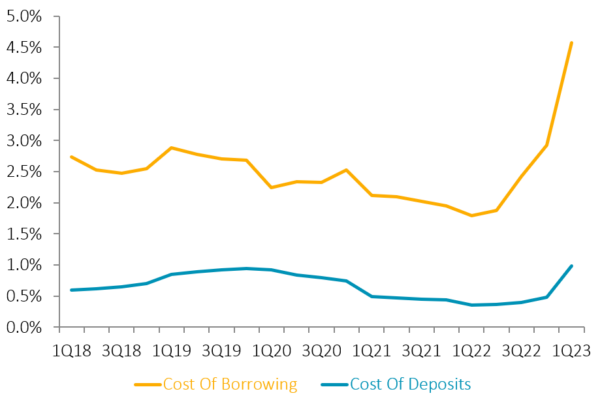Interest Margins Are Up. ROA Is Not.
Rising interest rates helped credit unions boost margins in 2023; however, increased provisions ate into ROA.
Rising interest rates helped credit unions boost margins in 2023; however, increased provisions ate into ROA.
What might performance in 2023 mean for 2024?
Credit union performance in the third quarter echoed that of the second, with continued tightening of liquidity, diminishing ROA, and deteriorating asset quality.
As credit unions repriced their asset portfolios, higher loan and investment yields bolstered margins and revenue. However, stiff competition for liquidity increased the cost of funds.
A look back at the Great Recession and subsequent industry performance offers an understanding of risks and opportunities in the current economic climate.
After two years of swings, first-quarter return on assets at credit unions was back in line with where things stood before COVID-19 upended the economic environment.
Credit union success on the balance sheet and income statement in the third quarter is creating new opportunities for future impact.
The lasting effects of the COVID-19 pandemic — and the national economic response to it — linger on credit union financial statements.
Credit union earnings rebounded toward the end of the year as industry players find a way to adapt their business models to a changing economic landscape.
Spread analysis deconstructs credit union earnings to gauge the health of an institution and its broader industry.

Rising interest rates helped credit unions boost margins in 2023; however, increased provisions ate into ROA.

What might performance in 2023 mean for 2024?

Credit union performance in the third quarter echoed that of the second, with continued tightening of liquidity, diminishing ROA, and deteriorating asset quality.

As credit unions repriced their asset portfolios, higher loan and investment yields bolstered margins and revenue. However, stiff competition for liquidity increased the cost of funds.

A look back at the Great Recession and subsequent industry performance offers an understanding of risks and opportunities in the current economic climate.

After two years of swings, first-quarter return on assets at credit unions was back in line with where things stood before COVID-19 upended the economic environment.
Credit union success on the balance sheet and income statement in the third quarter is creating new opportunities for future impact.
The lasting effects of the COVID-19 pandemic — and the national economic response to it — linger on credit union financial statements.
Credit union earnings rebounded toward the end of the year as industry players find a way to adapt their business models to a changing economic landscape.
Spread analysis deconstructs credit union earnings to gauge the health of an institution and its broader industry.